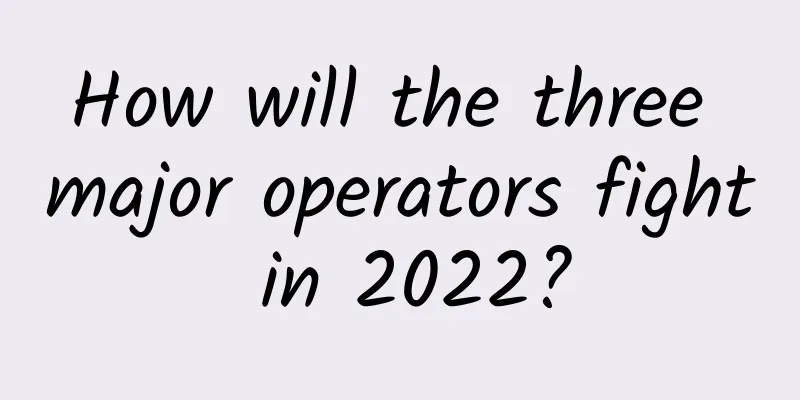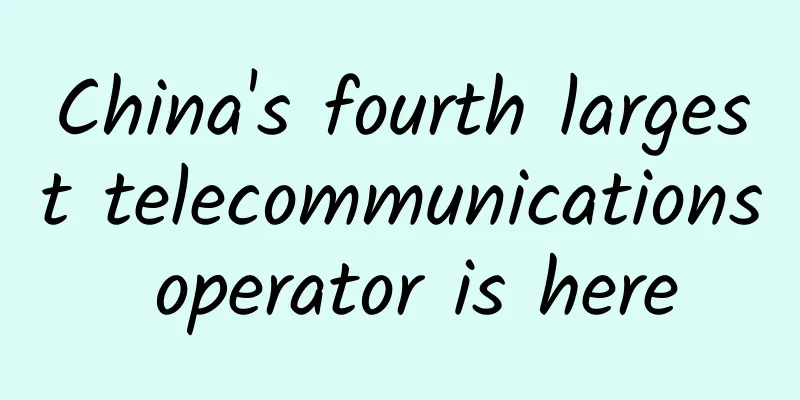IDC Commentary: The 6G that powerful countries are competing for may be just a pipe dream!

|
With the issuance of licenses and several major operators announcing their own 5G plans, China has officially entered the new era of 5G. According to the old tradition of the communication network being iterated every 10 years, some people believe that the 6G era is also beginning to beckon us. In the 5G era, if China has surpassed the United States in some areas and squeezed into the first camp of the world's communications industry, then with 6G, we may really be on par with the United States. As early as March last year, Miao Wei, Minister of Industry and Information Technology, said that China had begun research on 6G. As for the progress in the United States, shortly after Trump sent out a series of tweets in March this year, the FCC announced the opening of an experimental frequency band with a frequency range of 95GHz (gigahertz) to 3THz (terahertz), mainly based on "terahertz waves", providing developers with a 10-year use period. In April 2018, the Academy of Finland listed the "6G-supported Wireless Smart Society and Ecosystem" led by the University of Oulu as a flagship project of the national research funding program, which will receive more than 250 million euros in government funding over the next eight years. In addition to the above countries, Japan, South Korea and Germany are also not far behind. According to the Nihon Keizai Shimbun, Waseda University, electronics manufacturer NEC and Germany's University of Stuttgart will jointly develop mobile communication technology in the post-5G era. In January and June 2019, South Korea's LG and Samsung were reported to have established 6G R&D centers respectively. What exactly is 6G? Why can it "attract countless heroes to compete for it"? The most intuitive understanding of communication technology for ordinary users is probably network speed. Indeed, this is the most basic and valuable indicator for measuring a communication network. In the 4G era, the peak transmission rate was about 100MB, while in the 5G era, it reached 1Gbit/s. What about 6G? According to current industry research, it should be ten times that of 5G. However, some people may say that the bandwidth of 5G and even 4G is sufficient for civilian use. So in the future 6G era, will it be mainly used in the industrial field? In fact, this is probably not the case. In the 6G era, in addition to ultra-high-definition network television and the continued popularization of virtual reality applications, holographic technology will be one of the major highlights of 6G. The International Telecommunication Union has also included it in the white paper "Prospects for New Network Technologies in 2030 and Beyond". In layman's terms, in the 5G era, if we can only feel images and sounds, then 6G can also give us real senses of touch, taste and other five senses. For example, in the future, when you sit in front of a holographic TV or projector, you can smell the air of the Sahara Desert thousands of miles away, feel the temperature of the surface, and dance with strange deep-sea fish at the bottom of the Mariana Trench. Or, you can follow the combat soldier's portable sensors and feel the feeling of being hit by bullets on the battlefield. This is holography... However, holographic technology has extremely high requirements for the number, quality and transmission rate of sensors, which are difficult to achieve in the 5G era. Richard Li, chairman of the International Telecommunication Union's 2030 Network Technology Research Group and chief scientist of future networks at Huawei's US headquarters, mentioned in a report that if high-definition holographic projection of a person is to be achieved, the transmission rate must reach 4.62Tbit/s (terabit per second), which is nearly a thousand times the speed of 5G. Even for 6G, it will take a lot of effort to achieve this standard. Before the 4G era, the industry's focus was only on speed. But in the 5G era, the industry's focus has shifted to speed, low latency, and ultra-reliability. Unfortunately, the latter two have not yet achieved international unified standardization and need further adjustment. Only when these are standardized can 5G be popularized and 6G can be implemented. Another interesting aspect of 6G is its contribution to AI. With greater bandwidth, machines will learn faster in the era of artificial intelligence. Shen Jia, a senior 5G researcher at the Standard Research Center of OPPO Research Institute, said that with the popularization of AI technology and application scenarios, new business scenarios represented by intelligent agent interaction will emerge in the 6G era. For example, it may take decades for a Go master to pass on knowledge and skills to his apprentice, but with 6G, robots can quickly learn from each other and impart wisdom in a few seconds. What are the remaining obstacles to achieving 6G? Is it realistic? As we all know, the higher the frequency spectrum, the larger the bandwidth. Therefore, one of the key factors to ensure the speed of 6G is the spectrum. At present, the main spectrum of 6G is about 100GHz to 10THz, and its wavelength is between millimeter waves and infrared rays, which belongs to high-frequency radio waves. However, as the saying goes, "every inch has its own strengths and weaknesses", just like the problems currently faced by 5G, the biggest problem with terahertz waves is that they have poor penetration and anti-interference performance. Their transmission distance will not exceed 100 meters, while 5G is about 300 meters. In the 4G era, the base station coverage distance is about 800 meters. For thicker buildings, as well as encountering thunderstorms and strong winds, or even pedestrians blocking the way, it will cause strong signal attenuation, thus affecting the propagation distance and range. The only way to solve this problem at present is to continuously increase the deployment density of base stations. Although the size of 5G base stations is greatly reduced, their high density has caused people to worry about radiation. So, if 6G continues to increase, is it feasible? Some industry experts said that although there is no direct evidence that the radiation of electromagnetic waves to the human body will increase with the increase of frequency, it is definitely not okay to rely too much on power. However, the power of mobile communication electromagnetic waves is not large, and the coverage range of 5G base stations is very small, so its transmission power will be further reduced. As for 6G, there will definitely be greater improvements in this regard. At present, there is a view in the industry that 6G can be implemented through satellite networking. But in fact, satellite signals have their limitations. Not only will the speed be lower, but the cost will also be higher. In addition, low-Earth satellites are not synchronized with the rotation of the earth. To complete a communication service, multiple satellites must provide uninterrupted connections, and the problem of orbital limitations has not been taken into account. Therefore, satellite communications are only suitable for areas where base stations cannot be deployed, such as deserts, next door or oceans. In other words, satellites and ground communication base stations will only be a complementary relationship. In short, it is obvious that 6G can bring us more benefits, but it is still just a cutting-edge conceptual technology. Talking about the realization of 6G before 5G is implemented is somewhat like "mirage". Since 5G and 6G have many similarities, only when all the problems of the former are solved can we consider the implementation of the latter. |
<<: Summary of Operation and Maintenance Experienced Drivers: 150 Commonly Used Commands
>>: Why does TCP use the "three-way handshake" to establish a connection? An example will teach you
Recommend
The three major operators have cancelled data roaming charges, and data charges still have room for reduction
Recently, China Mobile, China Telecom and China U...
HostDare 60% off, Los Angeles VPS from $10 per year, Asia optimized line VPS from $17 per year
HostDare recently offered a 40% discount code for...
Why does TCP use three-way handshake? Can't two or four-way handshakes work?
The TCP protocol needs three handshakes to establ...
After the construction of 5G, 4G Internet access on mobile phones has become slower. Is this really a marketing trick of the operators?
Preface [[332244]] Recently, many customers and f...
VMISS newly launched Hong Kong BGPV3 node, 20% off, starting from 21 yuan/month, optional CN2 GIA/9929/CMIN2, etc.
VMISS has newly launched the Hong Kong BGP V3 nod...
ByteDance 2: How many methods do you know to optimize HTTPS?
The conversion from the HTTP protocol for naked d...
After unplugging the network cable, does the original TCP connection still exist?
Hello everyone, I am Xiaolin. Today, let’s talk a...
DogYun New Year's Day promotion: 30% off on Dynamic Cloud, 20% off on Classic Cloud, 100 yuan off on Dedicated Server per month, 50% off on Lucky Wheel
DogYun (狗云) hasn't offered discounts for more...
10,000-word article on HTTPS, no more panic in interviews!
The HTTP protocol only establishes the standard f...
Four major issues and three major directions: these are what you should know about 5G pre-commercial use!
At the MWC that just ended last week, 5G can be s...
TmhHost special package 4G memory 388 yuan/year, Los Angeles CN2 GIA/AS9929/Japan Softbank optional
TmhHost currently offers several special annual p...
UCloud Global Promotion/Official Subsidy as Low as 10% Off, Cloud Server as Low as RMB 52/Year
UCloud (UCloud Technology Co., Ltd.) is a listed ...
5G Technology: The Future of Smart Homes and Cities
The world is moving towards a more connected futu...
KT is forced to use "Korean speed" to make Gigabit "run" on copper cables
Korea Telecom is using GIGA Wire 2.0 technology t...
Why IoT needs LPWAN
LPWAN deployment for IoT devices aims to provide ...









